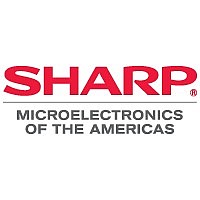S112S01 Sharp Microelectronics, S112S01 Datasheet - Page 8

S112S01
Manufacturer Part Number
S112S01
Description
RELAY SSR 120VAC 12A TRIAC 4-SIP
Manufacturer
Sharp Microelectronics
Series
S112r
Datasheet
1.S112S01F.pdf
(13 pages)
Specifications of S112S01
Circuit
SPST-NO (1 Form A)
Output Type
AC
Load Current
12A
Voltage - Input
1.2VDC
Voltage - Load
0 ~ 120 V
Mounting Type
Through Hole
Termination Style
PC Pin
Package / Case
4-SIP
Lead Free Status / RoHS Status
Contains lead / RoHS non-compliant
On-state Resistance
-
Other names
425-1225-5
Available stocks
Company
Part Number
Manufacturer
Quantity
Price
Part Number:
S112S01
Manufacturer:
SHARP/夏普
Quantity:
20 000
■ Design Considerations
(
Output
∗
Operating temperature
) See Fig.2 about derating curve (I
Input
● Recommended Operating Conditions
● Design guide
In order for the SSR to turn off, the triggering current (l
In phase control applications or where the SSR is being by a pulse signal, please ensure that the pulse width
is a minimum of 1ms.
When the input current (I
voltage across the Triac, V
please incorporate a snubber circuit. Due to the many different types of load that can be driven, we can
merely recommend some circuit vales to start with : Cs=0.1µF and Rs=47Ω. The operation of the SSR and
snubber circuit should be tested and if unintentional switching occurs, please adjust the snubber circuit com-
ponent values accordingly.
When making the transition from On to Off state, a snubber circuit should be used ensure that sudden drops
in current are not accompanied by large instantaneous changes in voltage across the Triac.
This fast change in voltage is brought about by the phase difference between current and voltage.
Primarily, this is experienced in driving loads which are inductive such as motors and solenoids.
Following the procedure outlined above should provide sufficient results.
Any snubber or Varistor used for the above mentioned scenarios should be located as close to the main out-
put triac as possible.
The load current should be within the bounds of derating curve. (Refer to Fig.2)
Also, please use the optional heat sink when necessary.
In case the optional heat sink is used and the isolation voltage between the device and the optional heat sink
is needed, please locate the insulation sheet between the device and the heat sink.
When the optional heat sink is equipped, please set up the M3 screw-fastening torque at 0.3 to 0.5N•m.
In order to dissipate the heat generated from the inside of device effectively, please follow the below sugges-
tions.
(a) Make sure there are no warps or bumps on the heat sink, insulation sheet and device surface.
(b) Make sure there are no metal dusts or burrs attached onto the heat sink, insulation sheet and device sur-
(c) Make sure silicone grease is evenly spread out on the heat sink, insulation sheet and device surface.
Input signal current at ON state
Input signal current at OFF state
Load supply voltage
Load supply current
Frequency
face.
Parameter
T
(rms) vs. ambient temperature).
S112S01
S212S01
F
) is below 0.1mA, the output Triac will be in the open circuit mode. However, if the
D
, increases faster than rated dV/dt, the Triac may turn on. To avoid this situation,
V
I
I
OUT
Symbol
I
OUT
F
F
(OFF)
(ON)
T
(rms)
f
opr
(rms)
Locate snubber circuit between output terminals
8
(Cs=0.1µF, Rs=47Ω)
F
) must be 0.1mA or less.
Conditions
−
−
−
−
−
MIN.
−20
0.1
16
80
80
47
0
S112S01 Series
S212S01 Series
Sheet No.: D4-A02501EN
×80%(
I
MAX.
T
120
240
(rms)
0.1
24
63
80
∗
)
Unit
mA
mA
mA
Hz
˚C
V
















